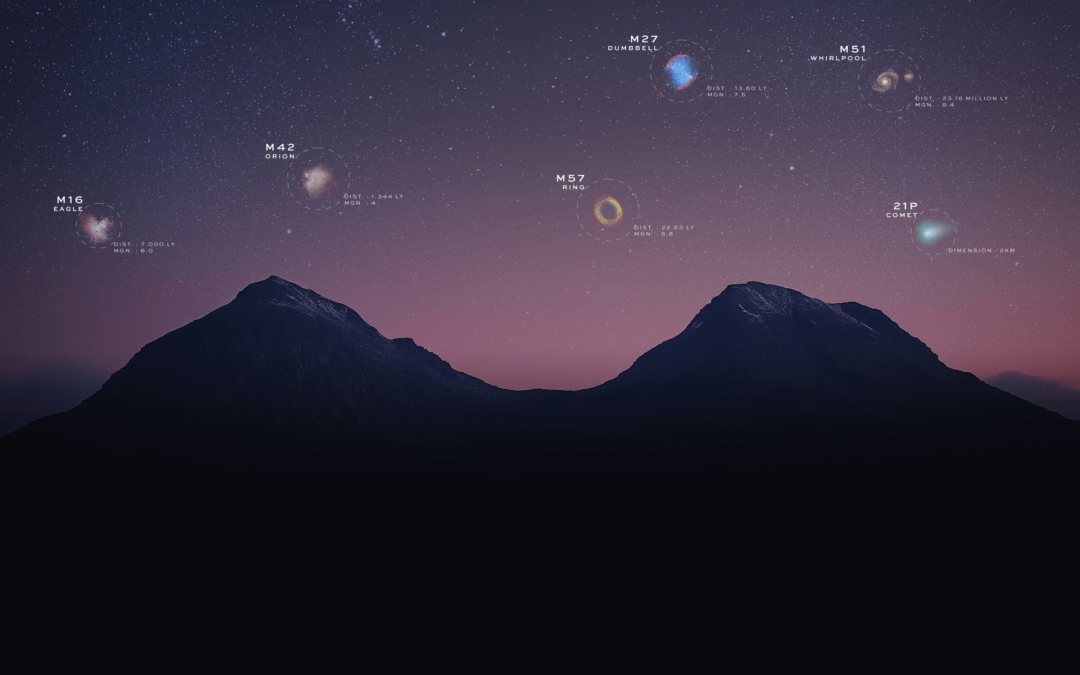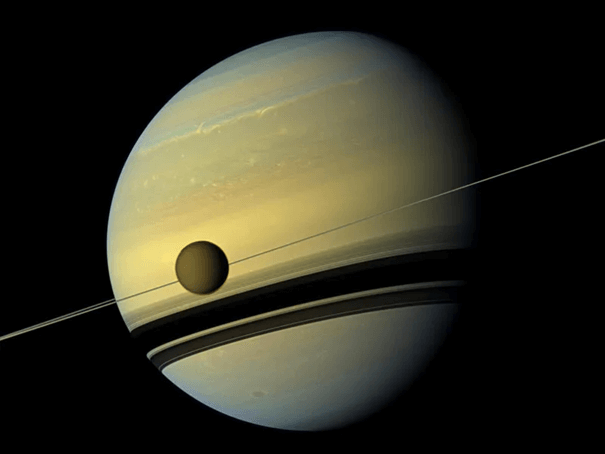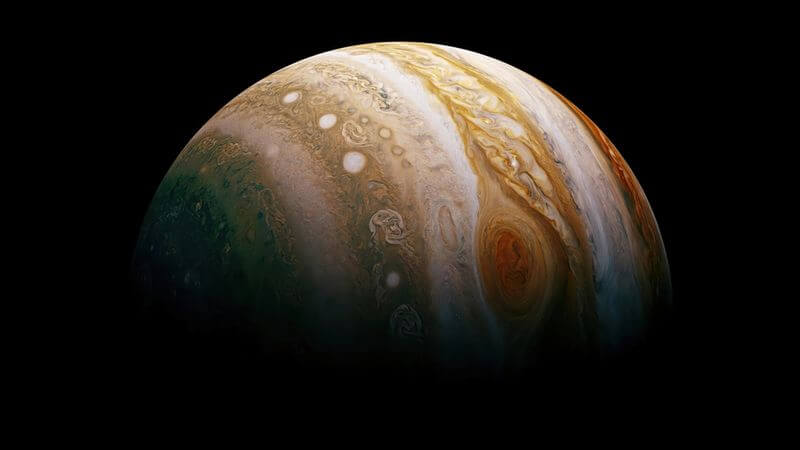Asteroid 7335 (1989 JA) is a big one. At a whopping 1 kilometer in diameter, an impact with Earth could be enough to endanger an entire continent. Compare that to the 2013 Chelyabinsk meteor incident: An asteroid just 20 meters wide exploded 30 kilometers above the ground, and the resulting shock wave from that relatively puny rock nevertheless injured 1,500 people. It’s estimated that asteroids as big as 7335 (1989 JA) collide with Earth once every 500,000 years, on average — releasing 53,000 kilotons of energy, the equivalent of over 3,500 Hiroshima atomic bombs. It’s definitely a target to keep a close eye on!
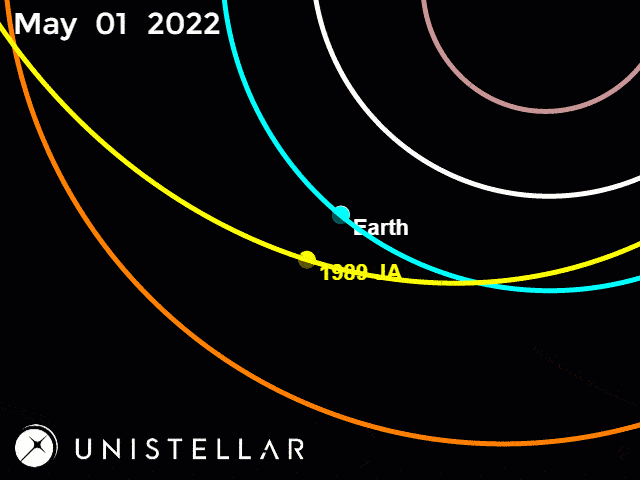
Orbit of 1989 JA crossing the orbit of our planet, by Tony Dunn.
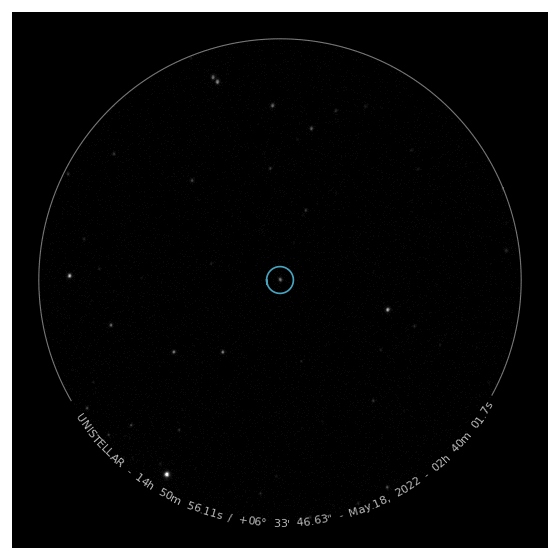
Observation of 1989 JA by John Archer with the eVscope.
Observe 7335 (1989JA) with your eVscope!
This NEA has been visible in the night sky since May 5, and will stay in sight until June 2 worldwide. But its closest approach will be on May 27, when the asteroid comes within 10 lunar distances of Earth. Astronomers still have much to learn about 1989 JA, including its precise size, shape and orbit, as well as whether it has any moons. Your data will help scientists refine these data points!
If you observe 7335 (1989 JA) near its close approach date, you’ll be able to see the moving asteroid liveview. The asteroid is easy to observe with the Unistellar App: just follow the HowTo Guide for A. The Planetary Defense target in the app’s database.
In the recording field, enter the following information:
- Exposure time: 3971 ms
- Gain: 25 db
- Duration: 25 minutes
At the end of your observation, record a dark frame with the dust cap on. One observation is enough! This asteroid’s next flyby won’t be until 2055, so don’t miss this opportunity to observe it while helping astronomers learn more about a potentially hazardous asteroid.
You can find more information on how to observe this near-Earth asteroid on our Planetary Defense Campaign page, including how to find it with your eVscope.
If you have any questions, please reach out to us at [email protected].
Further readings
Two spooky appearances in the sky for Halloween
Every month, discover three unmissable celestial events to observe with your Unistellar telescope.
3 Reasons to observe this month Halloween Edition
Every month, discover three unmissable celestial events to observe with your Unistellar telescope.
3 Reasons to observe this month
Every month, discover three unmissable celestial events to observe with your Unistellar telescope.
Titan’s shadows
This summer, the ringed planet Saturn takes centre stage in our night sky, offering amateur astronomers a rare opportunity to observe fascinating transient events.
Observing Eclipses on Jupiter: Cosmic Spectacles Through a Telescope
The latest Unistellar App Update, version V3.0, is now live. Explore a smooth stargazing experience !
Unistellar Community Included In Multiple Scientific Papers
Did you know Unistellar Citizen Astronomers are often cited in published scientific papers? Find out how you can contribute too!

